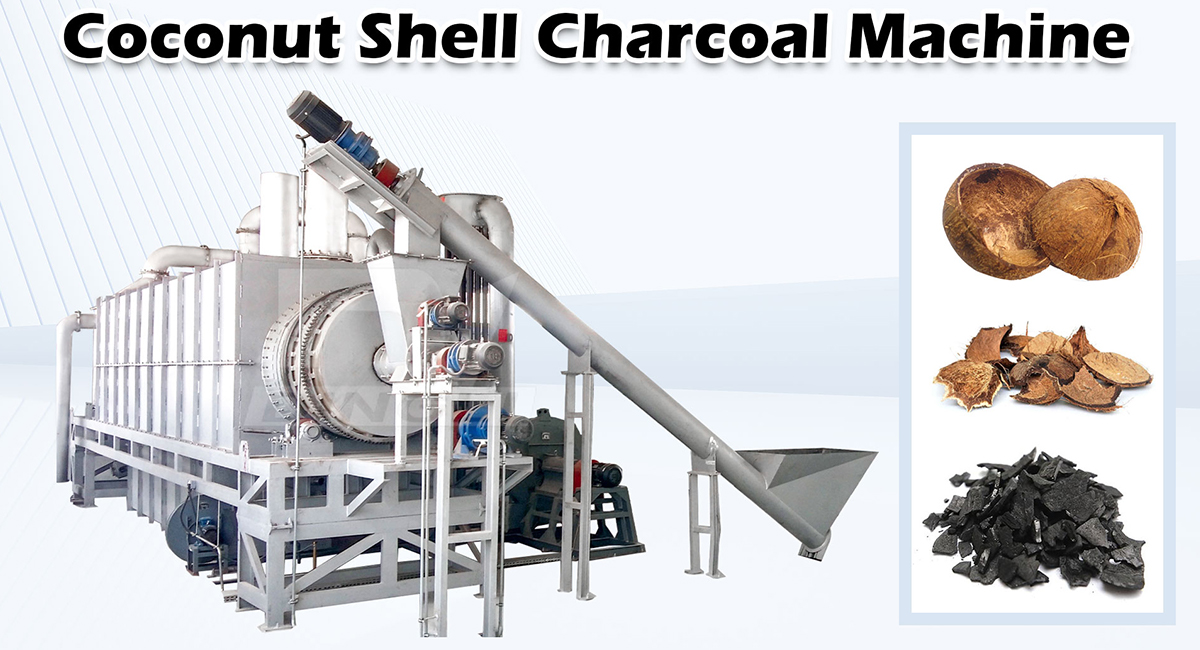 dinglimachine01@gmail.com
+86 16638159081(Wechat/WhatsApp)
dinglimachine01@gmail.com
+86 16638159081(Wechat/WhatsApp)
Coconut shell carbonization is not a simple heating, but a precise thermal conversion process that relies on professional carbonization equipment. Its core process is clear and controllable:
Raw material pretreatment: The recycled coconut shell must first be crushed to a suitable particle size (usually several centimeters) and dried to reduce moisture (ideal value is about 15-20%) to ensure carbonization efficiency and stable quality.
Continuous feeding and preheating: The pretreated coconut shell is continuously fed into the upper preheating section of the carbonization furnace through a sealed feeder. Here, the rising hot flue gas in the furnace is used to preheat the material and further remove moisture.

Core carbonization cracking: The material moves naturally downward under the action of gravity and enters the high-temperature carbonization section in the middle of the furnace. In a strictly oxygen-limited (anoxic) environment and precise temperature control (about 350-500℃), the coconut shell undergoes thermal decomposition. Volatile substances (wood vinegar, wood tar, wood gas) are released, leaving solid coconut shell charcoal with a high fixed carbon content.
Controllable cooling and charcoal discharge: The hot charcoal that has completed carbonization falls into the bottom cooling section. The charcoal temperature is safely reduced to near room temperature through an indirect cooling system (such as a water-cooled jacket, air cooling), and finally discharged continuously by a sealed charcoal discharge device to obtain finished coconut shell charcoal.
Treatment and utilization of combustible gas: The combustible gas (wood gas) produced by cracking can be returned to the combustion chamber of the carbonization furnace as a supplementary heat source after being removed by a purification system (such as a cyclone dust removal, a spray tower) to remove tar, dust and other impurities, thereby realizing energy recycling and significantly reducing fuel consumption.
This process relies on the carbonization machine to achieve continuous and automated operation, and is the cornerstone of efficient and environmentally friendly production of coconut shell charcoal.